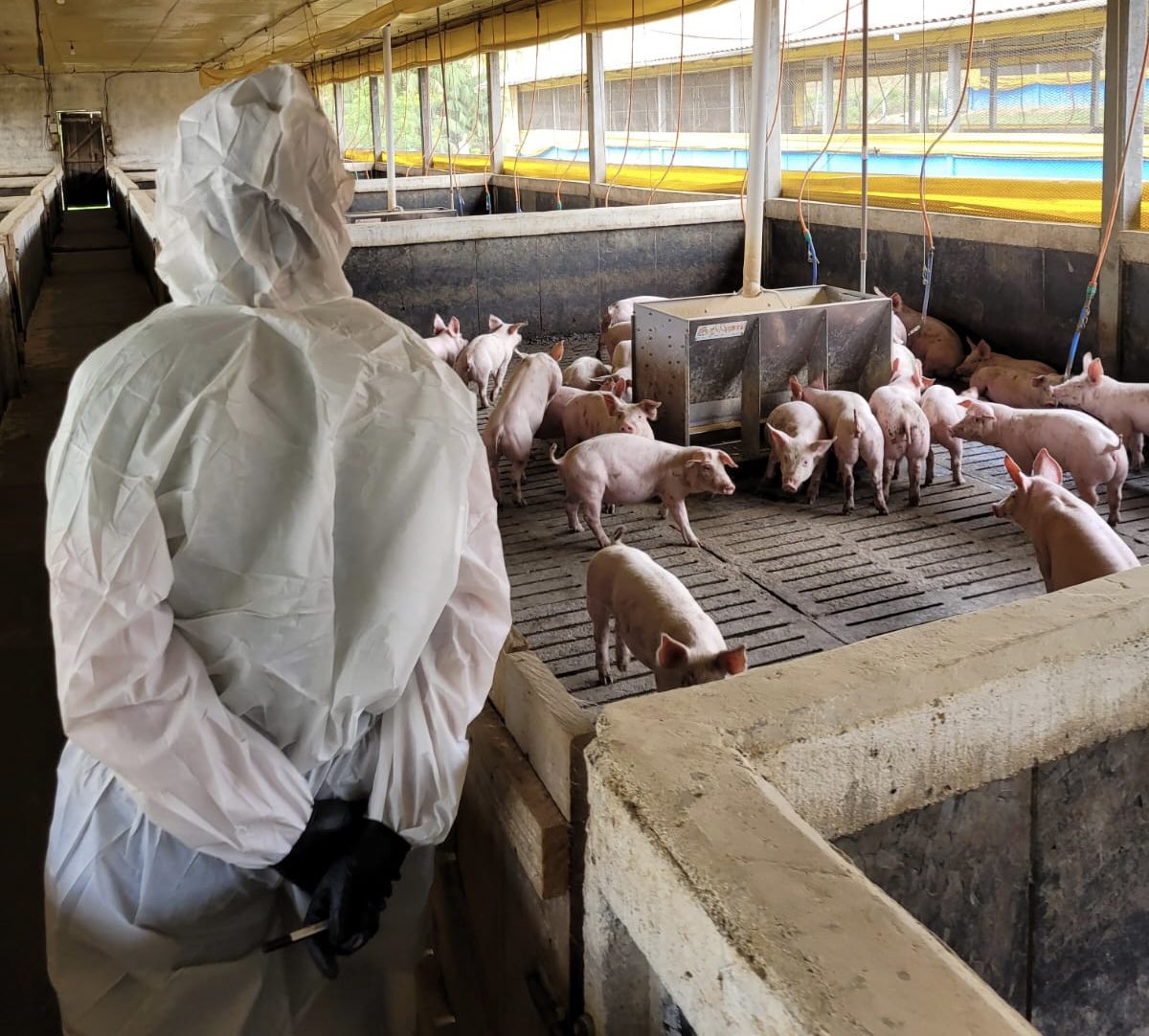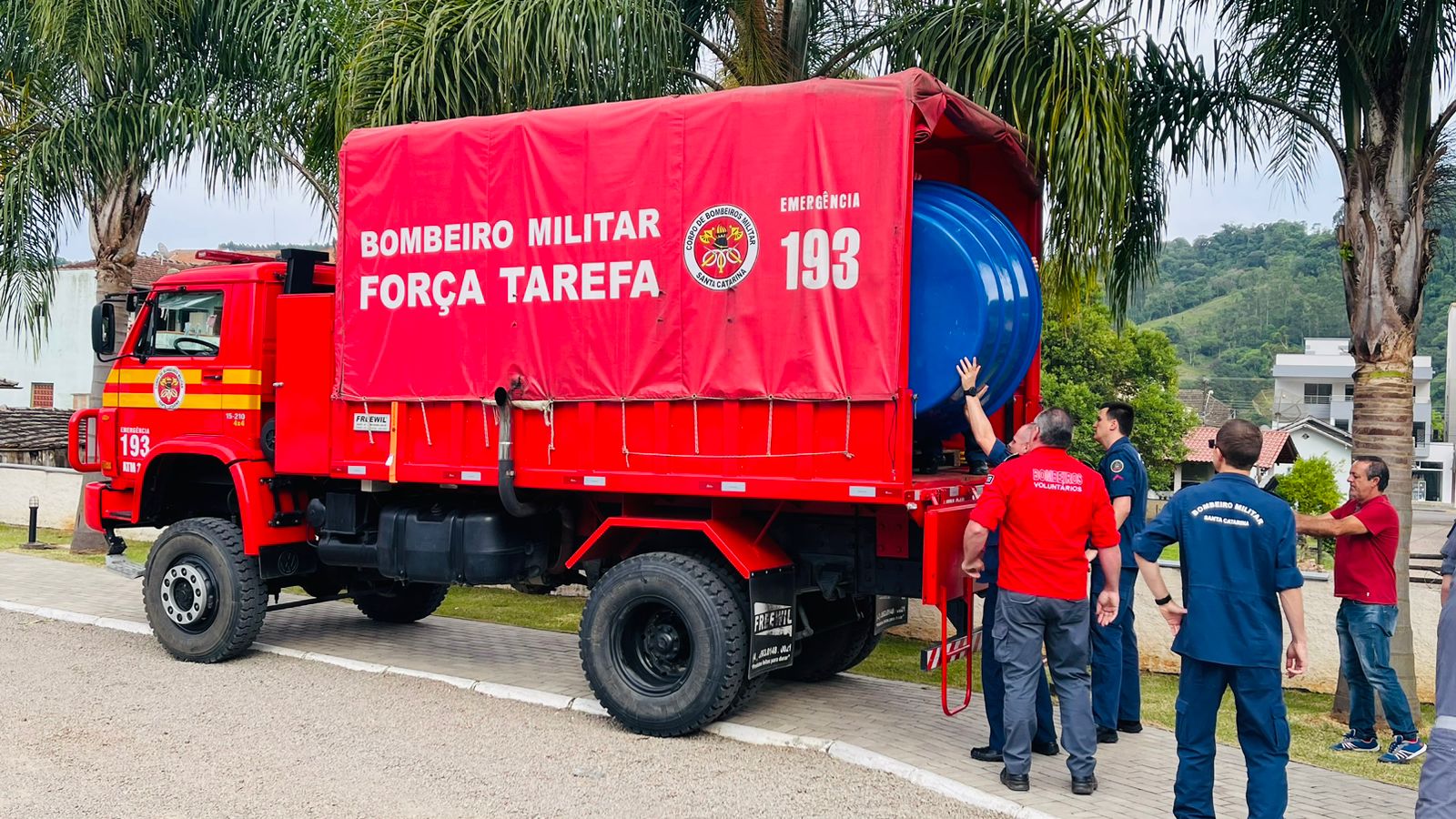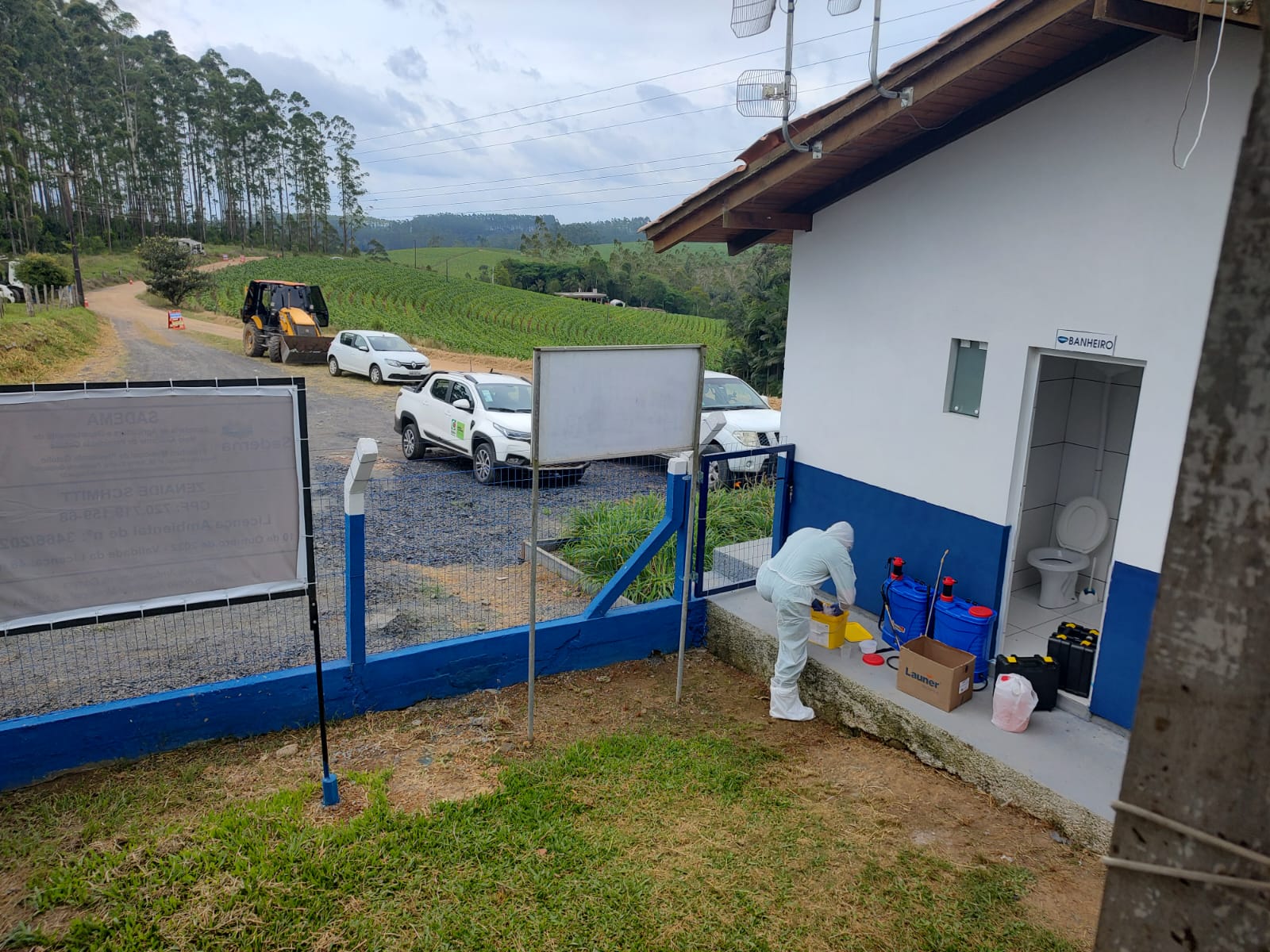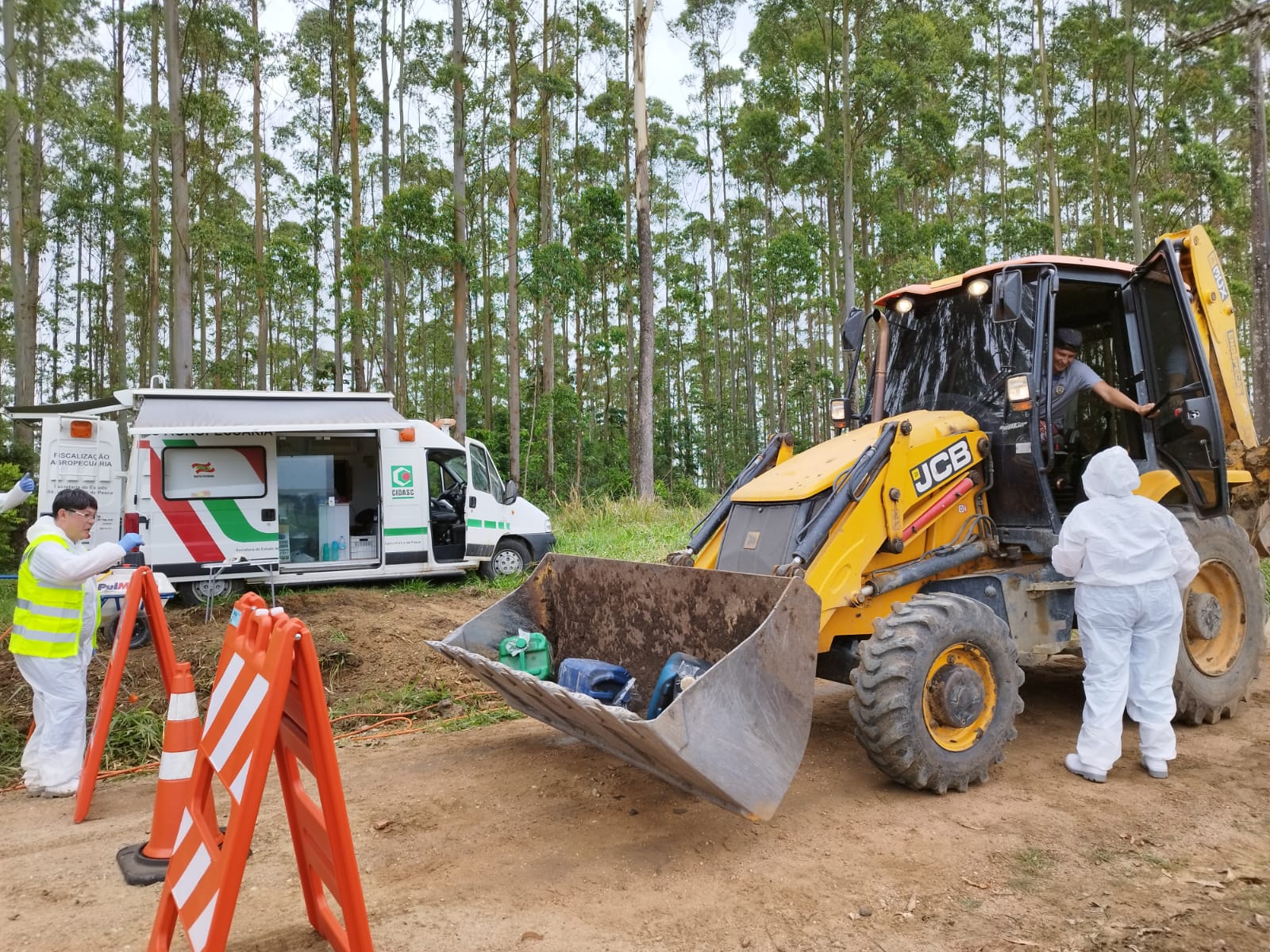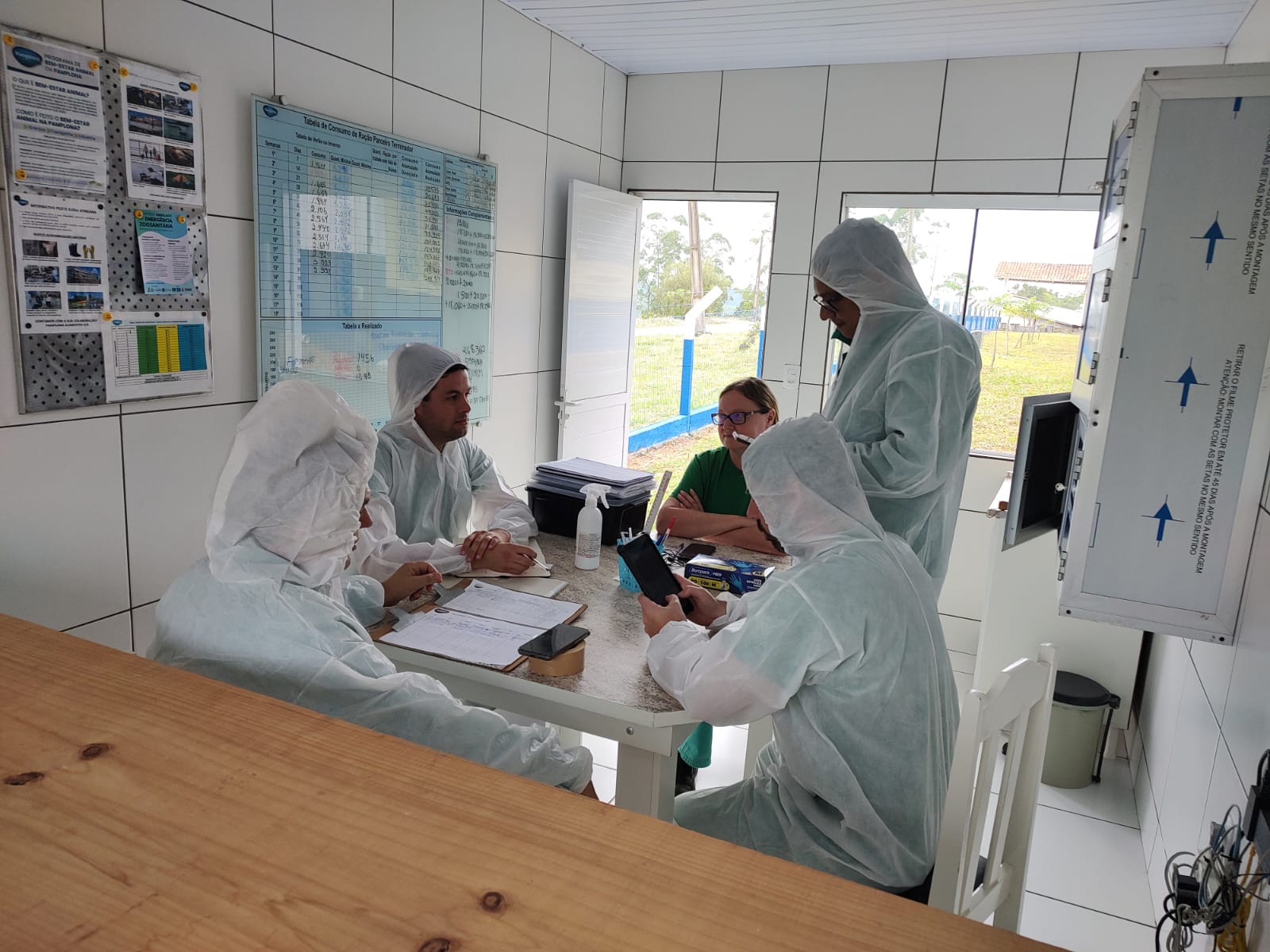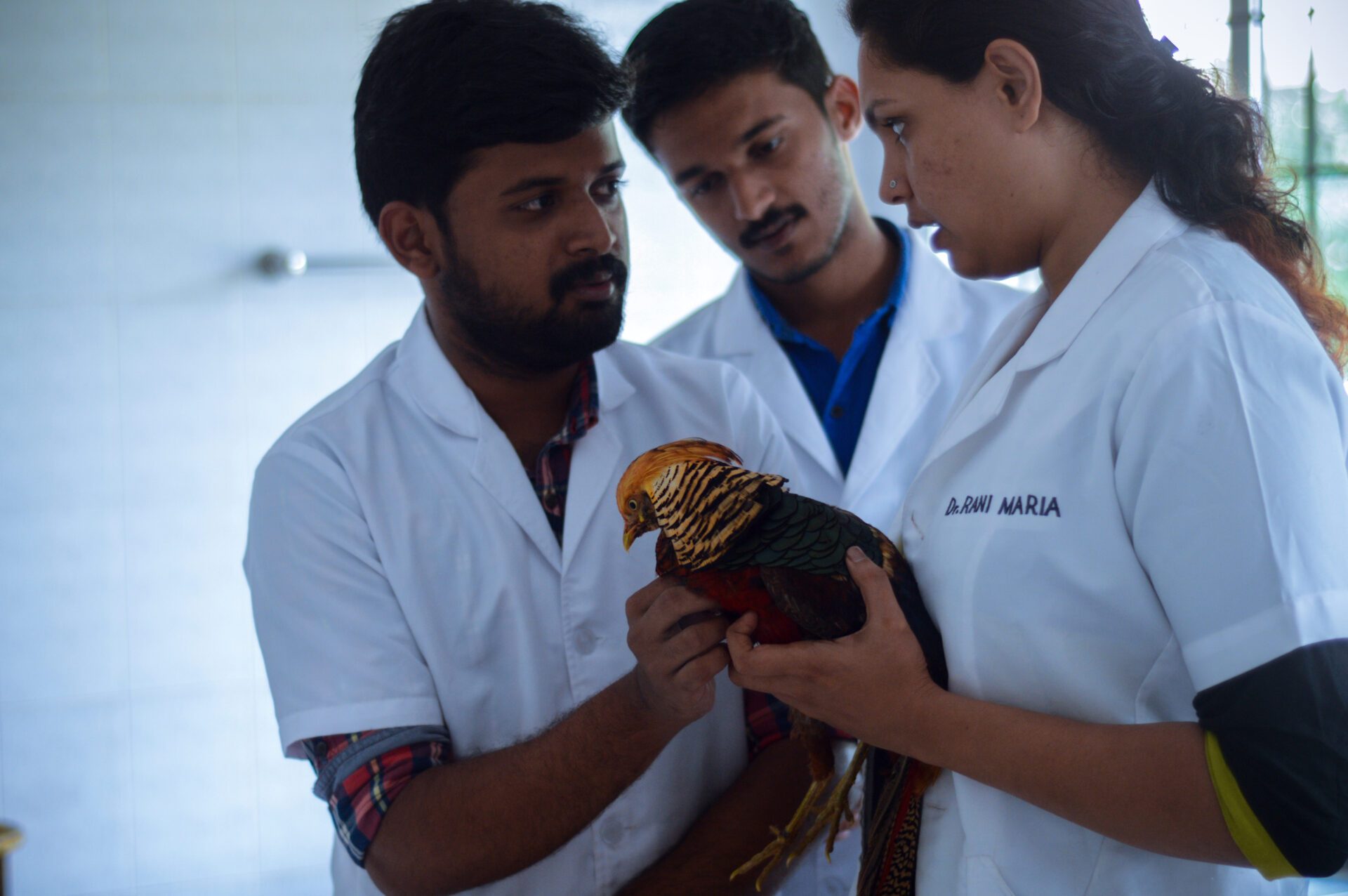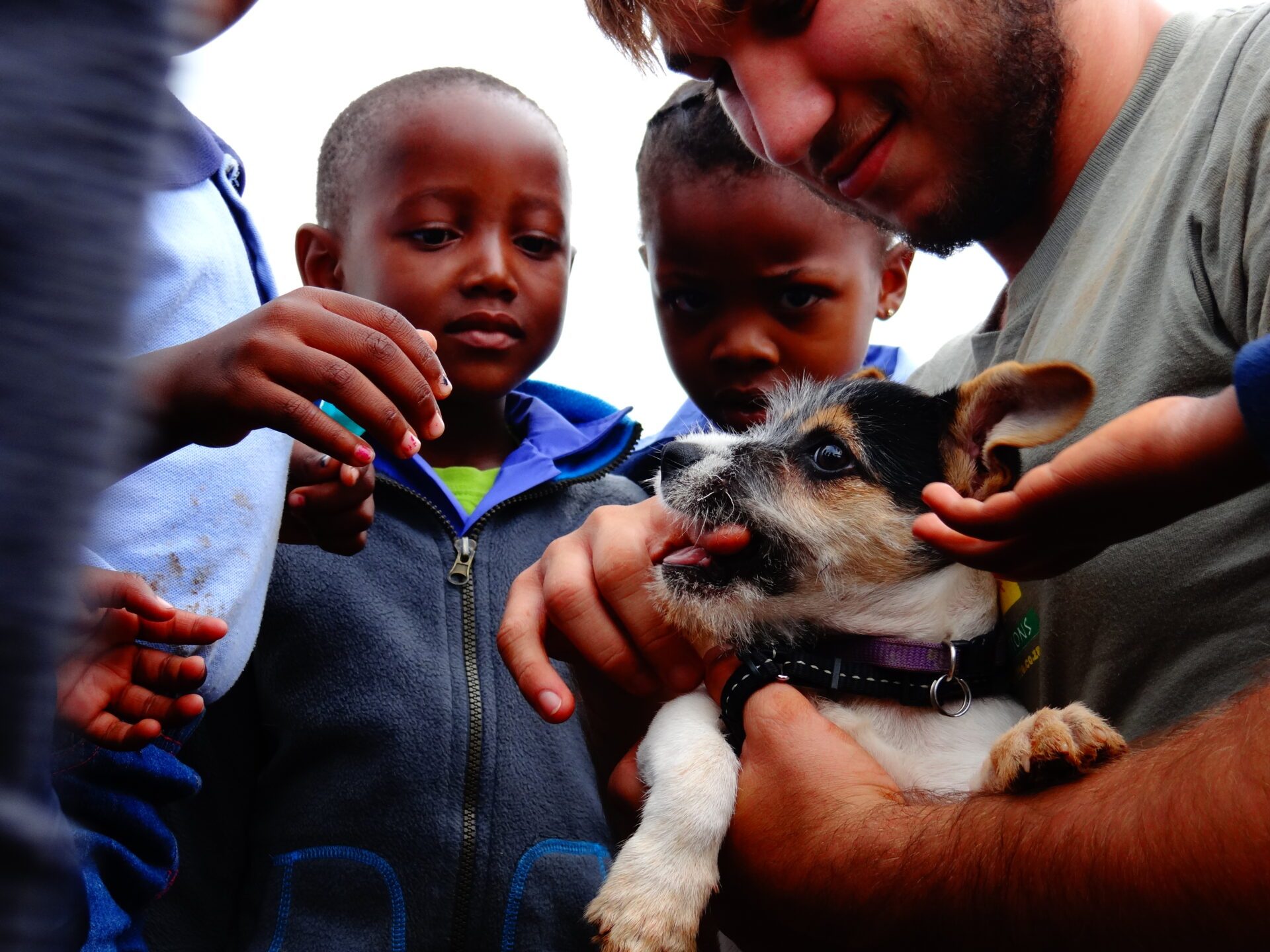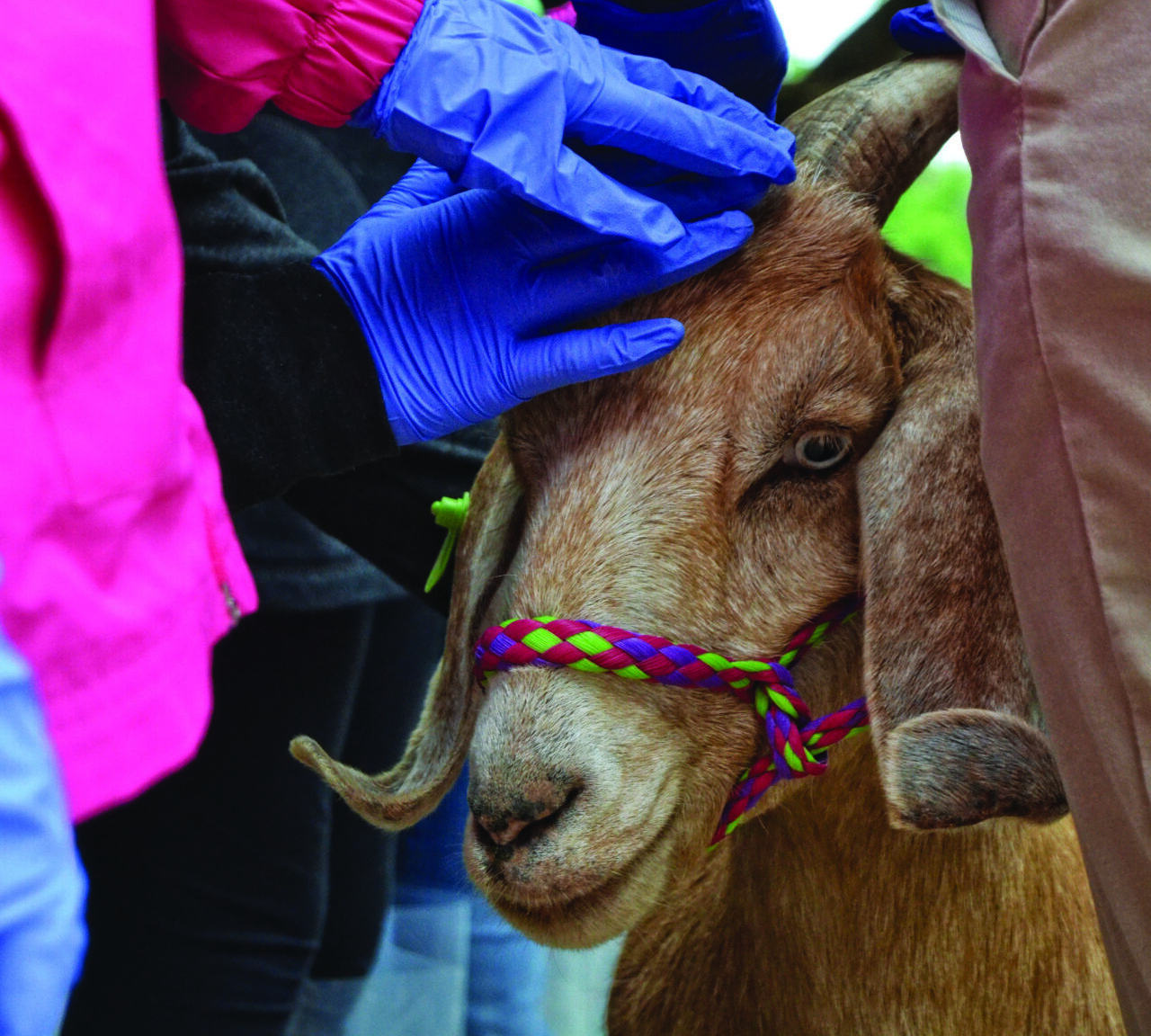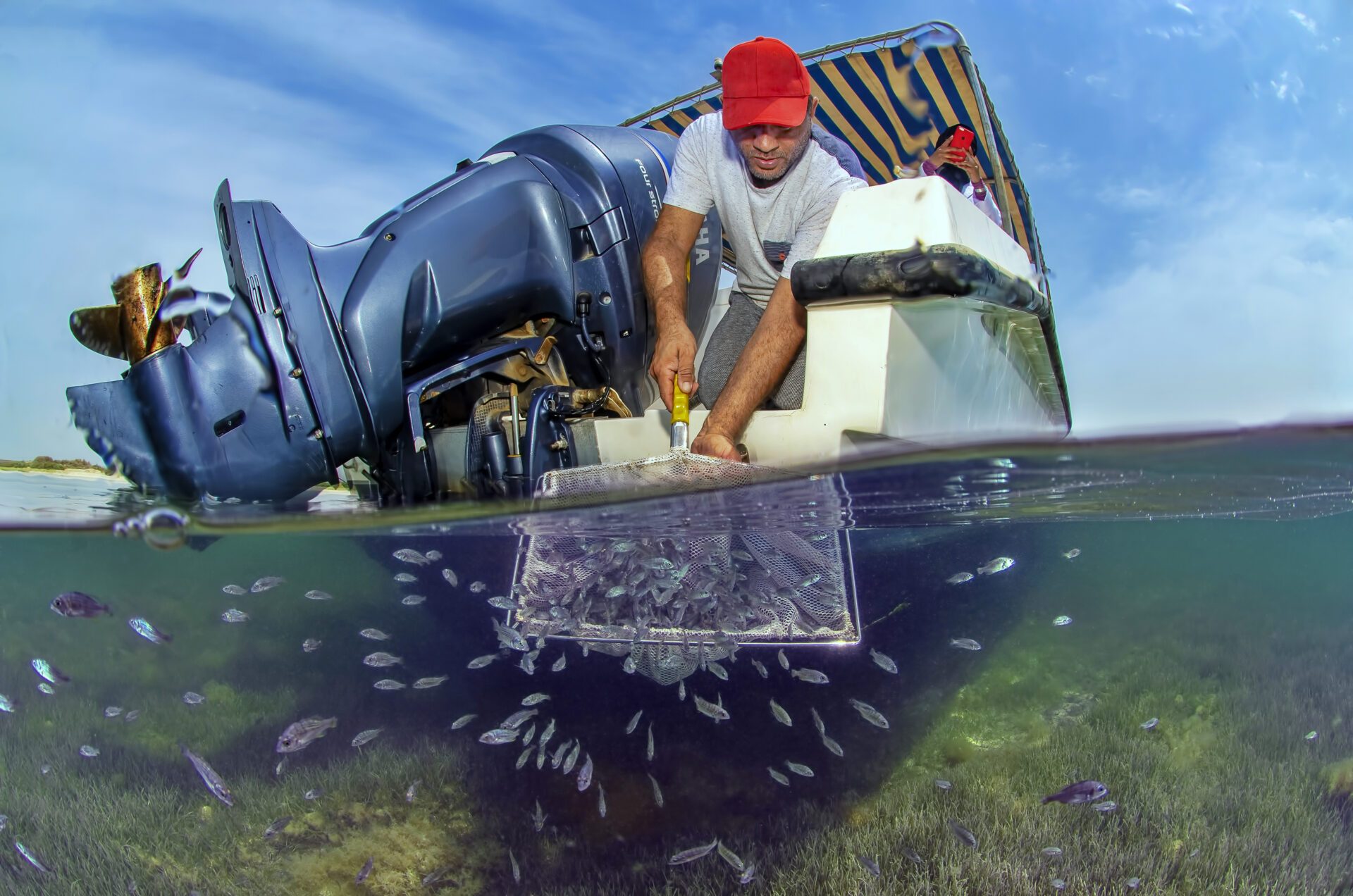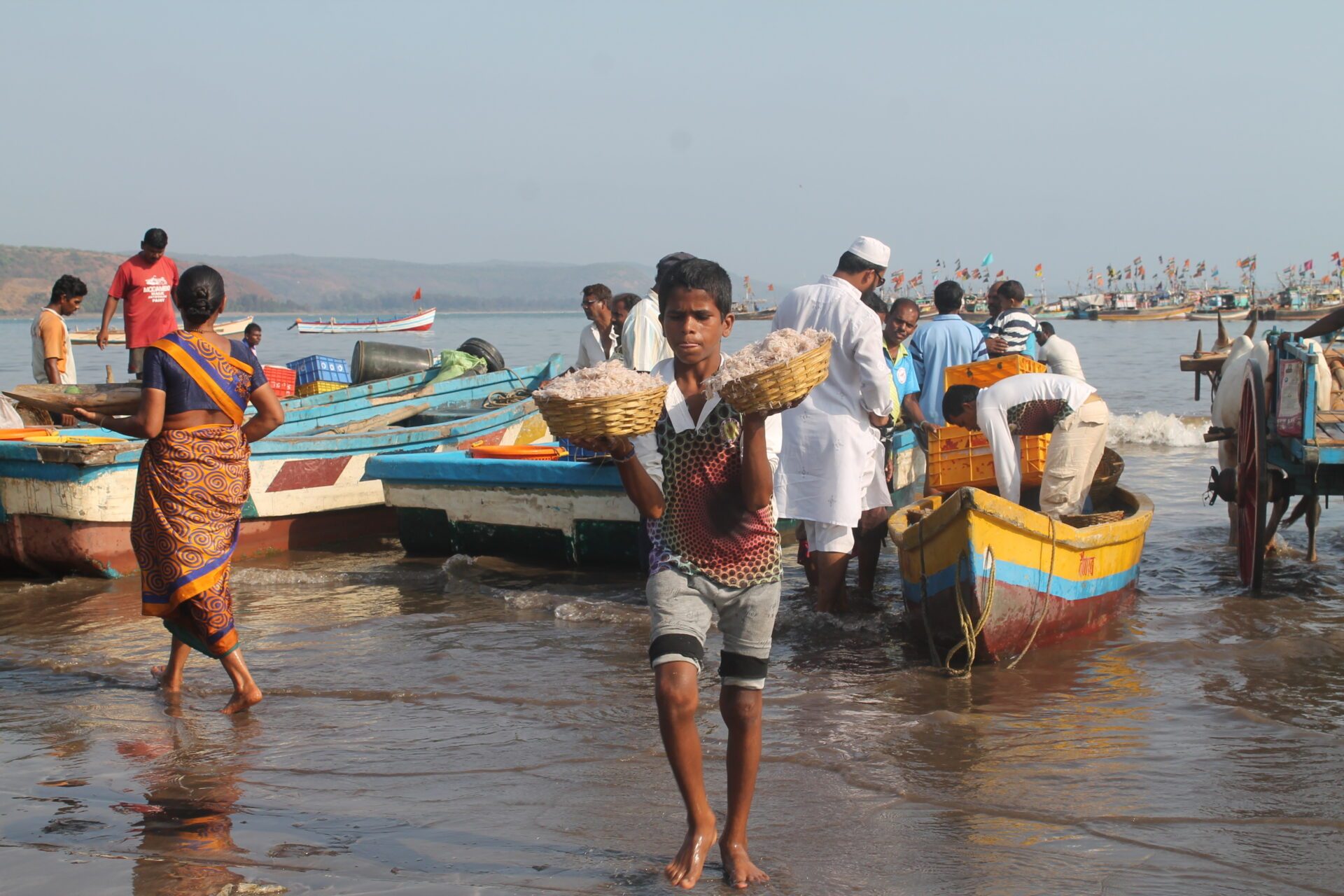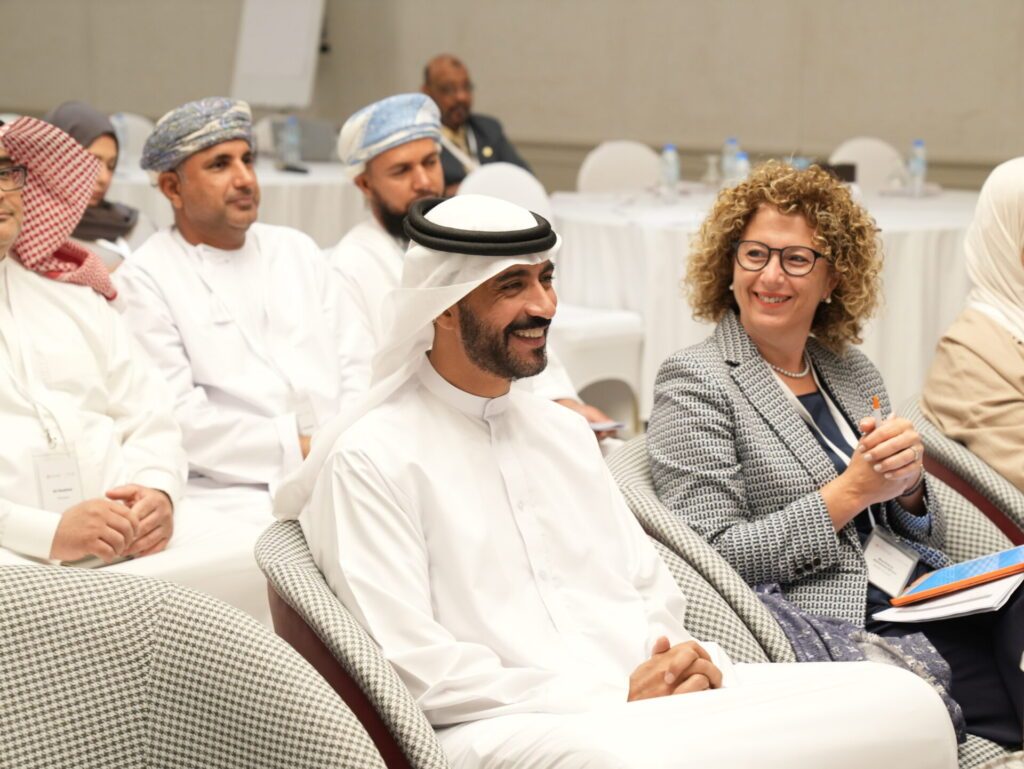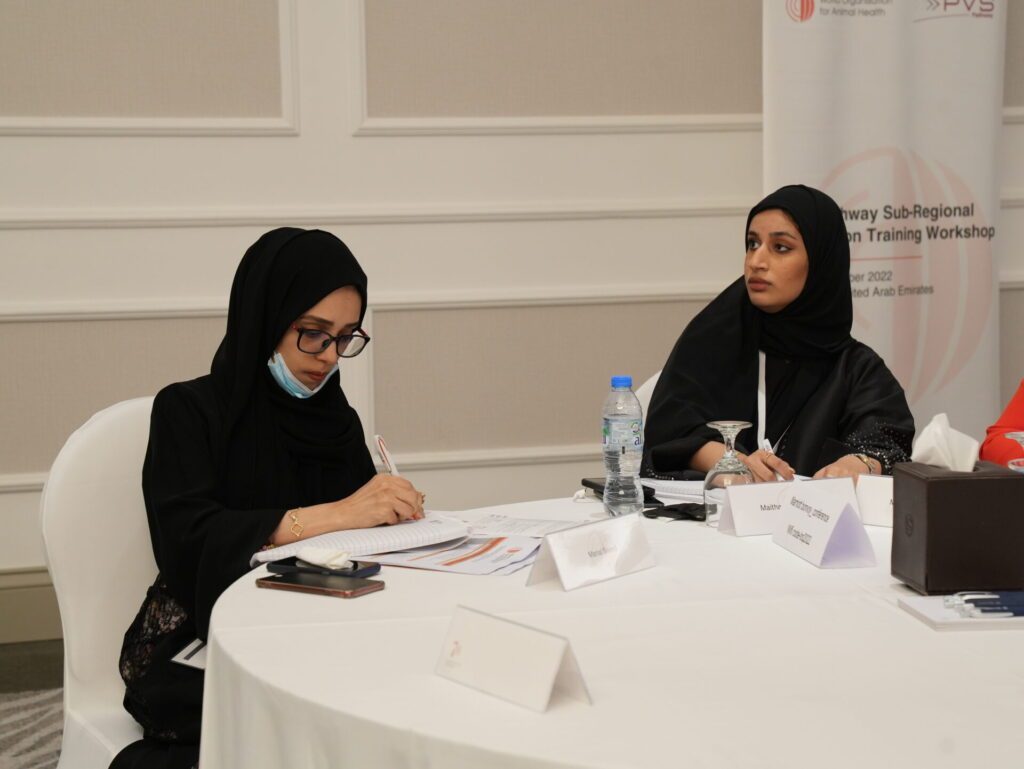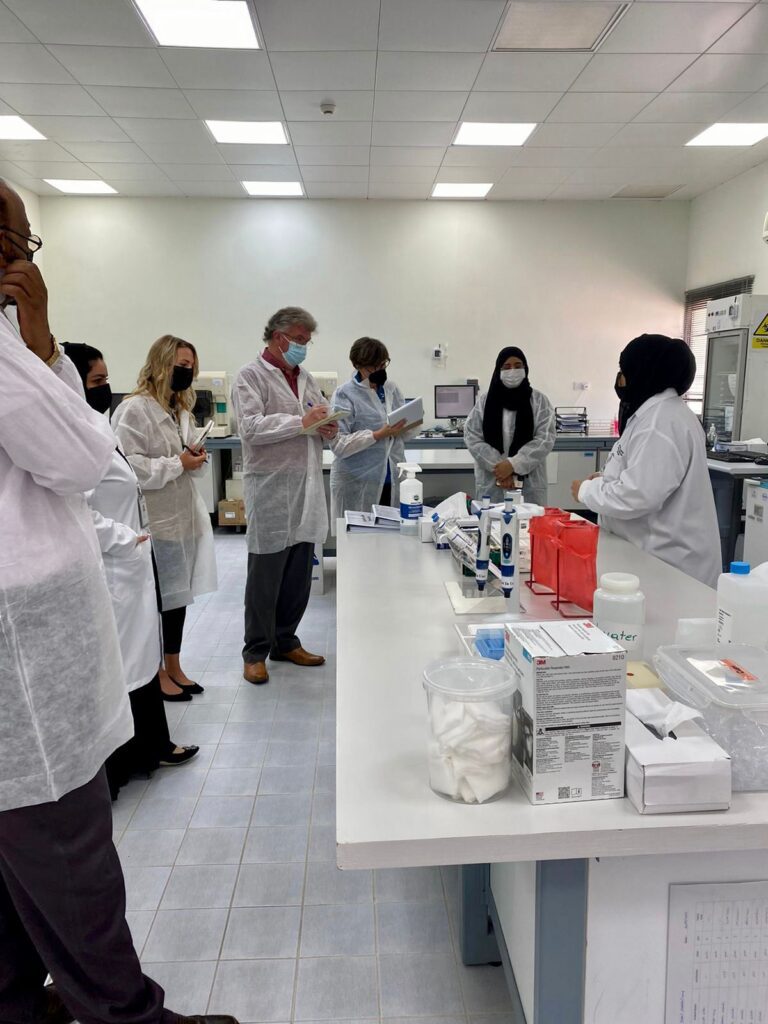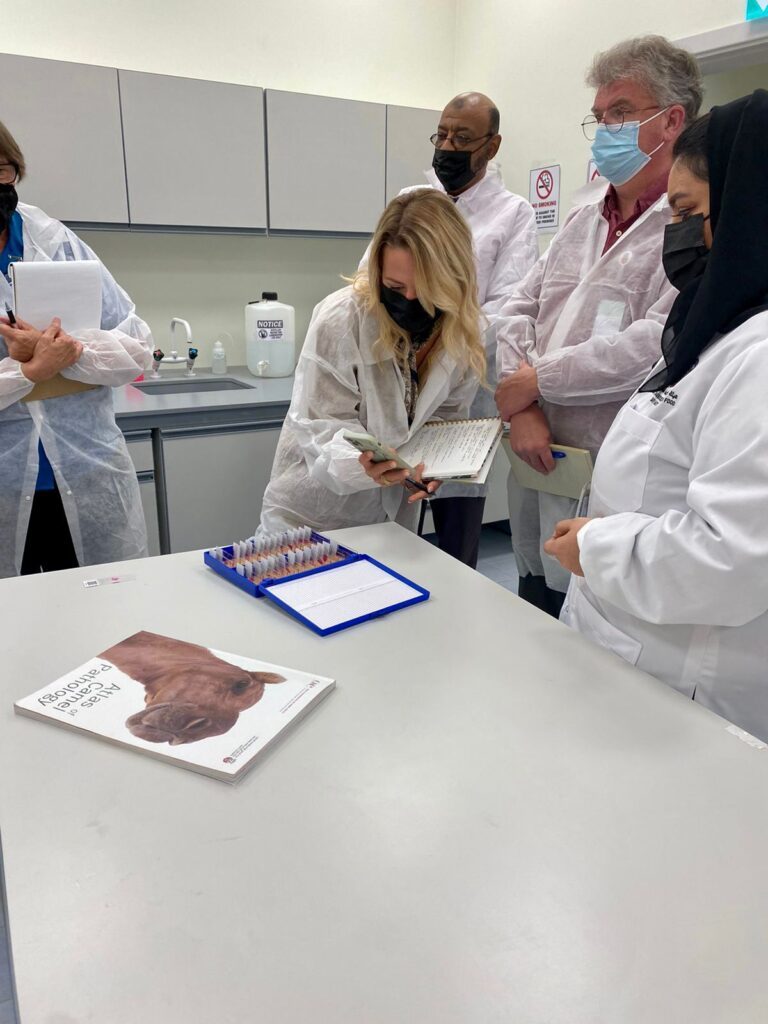COVID-19, Ebola, SARS… The pandemics we had to face over the past decades consistently demonstrated that we need strong international collaboration to prevent, prepare for, and respond to health threats. These pandemics have something else in common: all of them originated in animals. For the sake of animal health, for our economies and communities that depend on animals, and for our own health as humans, the veterinary workforce has a key role to play in all endeavours against zoonoses, and pandemics in general.
Pandemic prevention, preparedness and response with a One Health approach
In 2022, WOAH actively engaged in major initiatives in the field of pandemic prevention, preparedness and response. Since October 2022, international action against health threats has been reinforced. A One Health joint plan of action was launched by the Quadripartite collaboration (Food and Agriculture Organization, the United Nations Environment Program, the World Health Organization and WOAH), to integrate systems and capacity so that we can better tackle health threats collectively. It is based on a concept that is more relevant than ever: human, animal and plant health are interdependent and bound to the health of the ecosystems in which they exist.
WOAH worked with these international partners to outline a five-year plan (2022-2026) for One Health, focusing on six areas:
- capacities for health systems resilience,
- emerging and re-emerging zoonotic epidemics and pandemics,
- endemic zoonotic diseases, and neglected tropical and vector-borne diseases,
- food safety risks,
- antimicrobial resistance,
- and the environment.
Taking a closer look at these areas, one can notice the strong link between each of these challenges and animal health and welfare. While animals can be vectors of diseases and are at the heart of our food safety issues, they can also greatly contribute to human health and well-being and be victims of antimicrobial resistance. Ensuring our health starts with ensuring the health of animals.
The One Health approach draws lessons from the recent experience with COVID-19 pandemic, which exposed weaknesses and fragmented or insufficient investments in tools and systems to manage health emergencies. The One Health approach provides a framework for guidance and technical assistance to countries, international partners, as well as non-governmental organisations and academia. It promotes cooperation across countries and sectors, while it also engages communities to find solutions and develop new tools and technologies for prevention, preparedness and response to heath threats. It is also a tool for the international community to support countries strengthen their capacity to face future health threats. Global health security is a public good, requiring investment at local, regional and country levels.
Providing the financial means to accomplish our goals
Without steady financial investment, the One Health approach cannot ensure lasting impact. One of the new financial tools is the Pandemic Fund, launched in November 2022, during the G20 Conference. The fund is hosted by the World Bank, with WHO as a technical lead. It opened its first call for proposals right after the conference, and already received over US$ 1.4 billion in financial commitments. WOAH provides continuous technical support to Veterinary Services and fosters collaborative actions with their counterparts in ministries of health and environment to submit joint proposals for the Fund.
WOAH is also actively involved in the discussions pertaining to the development of a new international agreement, known as the Pandemic instrument, which is currently being negotiated and expected to be agreed upon in May 2024 by the World Health Assembly.
Now that One Health is well recognised as the way to collectively and effectively address health threats at the animal-human-environment interface, and that the governance structure and funding mechanisms are underway, it is time to move to practical actions.
WOAH reiterates its clear message: the veterinary workforce is on the front line for implementing the One Health approach to preventing zoonotic diseases, protecting human health and ensuring food security, among other goals. In 2023, WOAH will continue advocating for a better recognition of the veterinary workforce as a key actor of global health policies.
Because animal health is our health. It is everyone’s health.
Dr Monique Éloit
Director General of WOAH
Our agenda for the veterinary workforce
September 2023
United Nations General Assembly High Level meeting on pandemic prevention, preparedness and response
January 2024
WOAH’s 100th Anniversary
September 2024
United Nations General Assembly High Level meeting on antimicrobial resistance
Improving the conditions under which animals are being transported by air, sea and land requires international cooperation. For this reason, the November 2022 workshop organised in Cairo (Egypt) by WOAH brought together the key actors of animal transport between Europe, the Middle East and North Africa. This “Whole Journey Scenario” was an opportunity to exchange best practices and to bridge the gaps between international regulations and the actual situation of animals, in the framework of the animal welfare platform for Europe. Dr Rachel Dodeen, from Jordan, and Dr Ubeda Ortiz, from Spain, both participated in the workshop.
Animal transport and welfare: from citizen concerns to economic losses
“Bad conditions during animal transport increase the stress of the animals and have a direct effect on their health. They can cause injuries, sickness, and in some cases the death of animals that were healthy before starting transport. For this reason, bad transport conditions are not only an ethical problem, they also have serious economic consequences for exporters. The spread of diseases among weak or sick animals becomes a problem that landing countries have to face”, says Dr Ubeda Ortiz, one of the official veterinarians working at the exit point of live animals at the port of Cartagena, in Spain. Cartagena, one of the main ports in Europe for the export of live animals, is an ending point for road vehicles, and frequently the last point where animal welfare conditions can be checked before ships reach their destination.
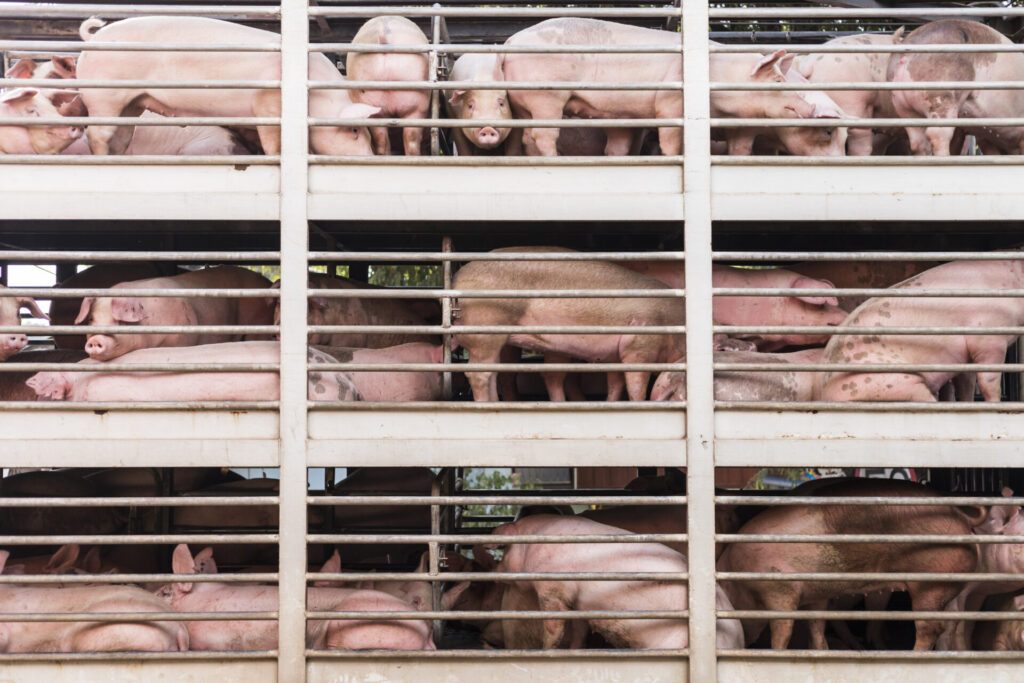
Enforcing national laws on animal transport
Dr Rachel Dodeen works in Jordan, at the other end of a shipping route: she is Head of the Quarantine department for Jordan’s ministry of Agriculture. Like Dr Ubeda Ortiz, Dr Dodeen is an animal welfare focal point with WOAH. In Jordan, animal welfare regulations exist, with a procedure to follow and penalties in case of violation. “But written law is not enough. It has to be enforced”, Dr Dodeen says. “This is why we need a continuous cooperation between veterinary authorities of exporting, transit, and importing countries, so that they can exchange reports on animal welfare violations or poor implementation.”
Training all stakeholders of animal transport is key
In Jordan, most imported animals arrive through the port of Aqaba, on the Red Sea. From Dr Dodeen’s experience, “what makes a real difference for animal welfare is to have a well-planned journey, and well-trained staff: vets, drivers, handlers, owners, and government officials, who are able to check and investigate animal shipments properly”.
From Spain, Dr Ubeda Ortiz agrees: “The economic operators need to be fully aware of the impact of animal transport conditions. Animal welfare rules may be seen as extra costs, bringing less animals in a given vehicle, or spending more in provisioning and expensive equipment, but they need to understand that this investment is not just mandatory by law, it also helps to increase the value of their operation. When this awareness exists, it is much easier to deal with the rest of the challenges”, he says.
Less than 40% of Members in Europe cooperate with the country of destination before, during or after the journey.
Source: Survey – Long distance transport of live animals: WOAH’s standards and best practices including societal perception and communication aspects (47 out of 53 Members from Europe participated)
A new contact network in the animal welfare platform for Europe
The “Whole Journey Scenario” workshop that took place in 2022 was an opportunity for animal welfare officials working on similar transportation routes to exchange experiences with their peers, and to see how best to deal with the most challenging situations, such as dealing with careless handlers or disregarded regulations. “The workshop brought together representatives from European countries, who are mostly exporters, and Middle East countries, who are mostly importers of live animals. We identified a weakness point: the lack of communication and follow-up, once a trip has started.”, Dr Dodeen says.
“One of the key takeaways from this workshop was to start building a contact network, that will be very useful to exchange information and better detect issues before a shipment reaches its final destination”, Dr Ubeda Ortiz says. “It will be particularly precious in case of an emergency, to clarify the circumstances that led to a situation and help prevent it in the future. Contingency plans often involve authorities from different countries, so knowing and understanding each other is crucial”.
The Observatory: monitoring the implementation of animal welfare standards
In addition to organising specific workshops on the topic, WOAH is monitoring the implementation of animal welfare during transport standards by Members. The first Observatory annual report which was released in 2023 includes a section on animal welfare. The Organisation now intends to work further on animal transport by conducting a thematic study which will explore the barriers and challenges Members may face when implementing standards related to that topic.
Improving cross-boundary cooperation for animal welfare
The construction of international networks of peers, to improve cooperation and face emergencies, is one of WOAH’s key missions. For this reason, the issue of animal transport was addressed during the last regional conference for Europe, in October 2022. Furthermore, the current Action Plan of Platform on Animal Welfare for Europe (2021-2023) includes training materials, training workshops and the creation of a network of Contact Points on Long-Distance Transportation for Europe. The network has a meeting planned in Ireland in June 2023, with a regional “Whole Journey Scenario” workshop session. A multi-regional “Whole Journey Scenario” workshop for Europe, North Africa and the Middle East is due to take place in Tunisia in the second semester of 2023 to further strengthen communication and collaboration to improve animals’ welfare during transport.
While most people are familiar with the work of veterinarians, less may be aware of the vaccinators, laboratory workers or meat inspectors who comprise the veterinary paraprofessional workforce in many countries. In rural areas where veterinarians are lacking and populations cannot always afford their services, veterinary paraprofessionals are essential to maintain animal health, inform populations on best practices and detect animal diseases that could turn into epidemics. To support the development of their capacities and of the paraprofessional workforce in general, WOAH undertook multiple missions to advance VPP education in various countries in 2022, as part of a pilot for new “Targeted support activities” of the PVS Pathway.
Aligning veterinary paraprofessionals curricula to WOAH standards
VPP curriculum support activities took place in Togo from November 2021 to March 2022, enabling the two participating national education institutions to assess their veterinary paraprofessional training courses against WOAH’s curricula and competency guidelines.
“The analysis of our curricula showed discrepancies with WOAH guidelines. We worked in groups with the Curricula Alignement Matrix (CAM) tool provided by WOAH to improve our current academic programme so that it matched the Organisation’s recommendations”, says Dr Soedji, Director General of the National Institute for Agricultural Training (INFA) of Togo. “Our programme was organised by subject matter but after the assessment, we decided to focus on the learning objectives for veterinary paraprofessionals instead”, he explains.
Other issues included the scope of veterinary paraprofessionals’ work: “Some veterinary paraprofessionals are not fully aware of the extent of their duties and carry out medical acts that they are not supposed to do”, he stresses. WOAH support bolstered links between veterinarians in private and public practice through the harmonisation of veterinary paraprofessional training curricula.
“The training modified the way we provide our services.”
Mr Sanita Lare, veterinary paraprofessional in Togo and beneficiary of the continuous training programme in 2022.
Deploying the curricula assessment tool to reach new beneficiaries
Following the success of the pilot curriculum assessment in Togo, a similar mission was set up in Georgia in September 2022. For quality manager Ms Nino Dvali, from Amagi College in Gori, the first-of-its kind assessment for Europe allowed the Georgian team to run a diagnosis on their curricula: “We identified many gaps in our programmes. For example, we only have a few hours of laboratory training planned for the students, and we need new equipment. WOAH team helped us write recommendations for our government, as we can’t change the programmes ourselves”, she says. A shortcoming was also singled out in the study of some animal illnesses: “The experts pointed out that our curricula only covered cow, dog and cat diseases, and that there was a major gap on fish diseases”, Ms Dvali remarks.
The implementation phase of the mission is highly anticipated by Ms Dvali and her team, as the training of veterinary paraprofessionals is a critical issue in Georgia where the average age of veterinarians is above 60 and a shortage of qualified professionals is looming.
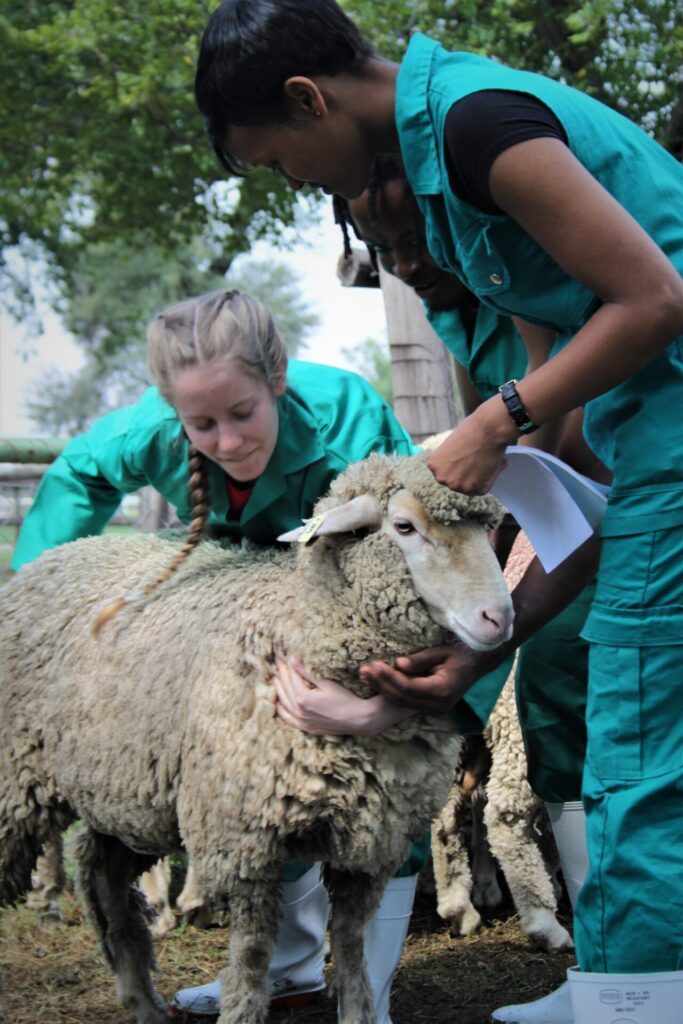
Seeing the benefits of improved training in the field
Mr Sanita Lare, a veterinary paraprofessional working in Togo, also benefited from WOAH’s education programmes in 2022. He and the other participants received continuous training with a focus on practicing and perfecting skills that ranged from animal restraint to obtaining blood samples from the tail and jugular veins. “We are trying to implement what we have learnt, like washing hands, and changing clothes and boots between inspections. The training modified the way we provide our services”, he says.
An assistant to the regional veterinary officer, Mr Lare is keenly aware of the local difficulties: “Self-medication, shortage of vaccines and a reluctance to vaccinate are major issues we see in the field”, he explains. Communicating with rural communities and animal health authorities, veterinary paraprofessionals play a major role in maintaining animal health and preventing the spread of diseases: “For instance, we are able to launch investigations if the mortality in a species is higher than usual”, he says. Proper training of this essential workforce could very well be the key element in preventing the next global health crisis, especially since 75% of the emerging diseases affecting humans originate in animals.
Supporting veterinary education: our targeted tools
In addition to empowering veterinary paraprofessionals through education, WOAH has developed a series of tools to help its Members bridge gaps in veterinary education that were identified through PVS Evaluation reports. These include guidelines on core curriculum, recommendations on the competencies of graduating veterinarians and a guide to education twinning projects.
Annamaria Conte is Head of the Statistics and Geographic Information System Unit at institute Zooprofilattico Sperimentale (IZS) dell’Abruzzo e del Molise “G. Caporale”-Teramo.
Paolo Calistri is Head of the Epidemiology and Public Health Department at Institute IZS-Teramo.
How do vector-borne diseases such as Rift Valley fever spread?
Paolo Calistri: Rift Valley fever is a vector-borne disease transmitted by infected mosquito bites. The disease affects domesticated animals such as buffalo, camels, cattle, goats, and sheep, while wild animals can act as reservoirs of the virus in some African areas. The disease can also affect humans. It can spread geographically with the movement of infected animals, but this route of dissemination can be controlled through international trade regulations. Another way is through infected vectors: in this case, several species of mosquitoes have been identified as capable of transmitting the virus. No need to say that there are no control measures to block mosquitoes from flying across national borders! Through wind or other passive mechanisms (inside airplanes, sea cargos, etc.), they can travel long distances.
The PROVNA project (“Defining Ecoregions and Prototyping on Earth Observation (EO)-based Vector-borne Disease Surveillance System for North Africa”), launched under WOAH’s initiative, aims to help countries in North Africa target their surveillance on Rift Valley fever, by tapping into remote sensing and earth observation data. By helping North African countries build an early-warning system and keep the spread of Rift Valley fever under control, we are helping everyone, including in other neighbouring regions such as Mediterranean Europe and Middle East.
Why are environmental and climate data helpful to predict the movement of mosquito populations?
Annamaria Conte: We are aiming to identify ecoregions in North Africa, with similar characteristics in terms of temperature, environment, vegetation and moisture of the soil, notably. We use earth observation data from NASA and high-resolution data from the European programme Copernicus, combined with data on animal population and occurrence of Rift Valley fever, extracted from the World Animal Health Information System (WAHIS) and FAO Empres-I . If infected mosquitoes appear in one of these areas, we can expect similar areas to be able to house the virus as well.
We combine spatio-temporal data to build a prototype which should be able to predict the locations of areas at risk, and when the risk might occur. We take into account past conditions of temperature, rainfall and vegetation: we look at the past to forecast the future.

What kinds of expertise are required to design such a model?
A. C. The group I lead is composed of mathematicians, statisticians and geographers. We collaborate with Paolo’s team of veterinarians and epidemiologists, so it’s a perfect transdisciplinary environment. Together, we identify the most relevant indicators to each specific disease from earth observation data and we apply machine learning and artificial intelligence techniques to map out the areas at risk of infection. Our first model concerned the spread of West Nile fever in Italy: we were able to predict 15 days in advance where the climatic and environmental conditions favorable to the virus spread were most likely to occur. With PROVNA, we are developing a similar model for Rift Valley fever in North Africa.
How is this information going to be used to contain vector-borne diseases?
P. C. We cannot stop the mosquitoes. However, if we know in advance when and where mosquitos are most likely to spread and potentially infect livestock, we can plan vaccination campaigns and emergency measures at the right time and place. The model provides us with an efficient early-warning system, that can be associated with a contingency plan. For example, hospitals can know when and where the mosquito season will start this year, and get ready.
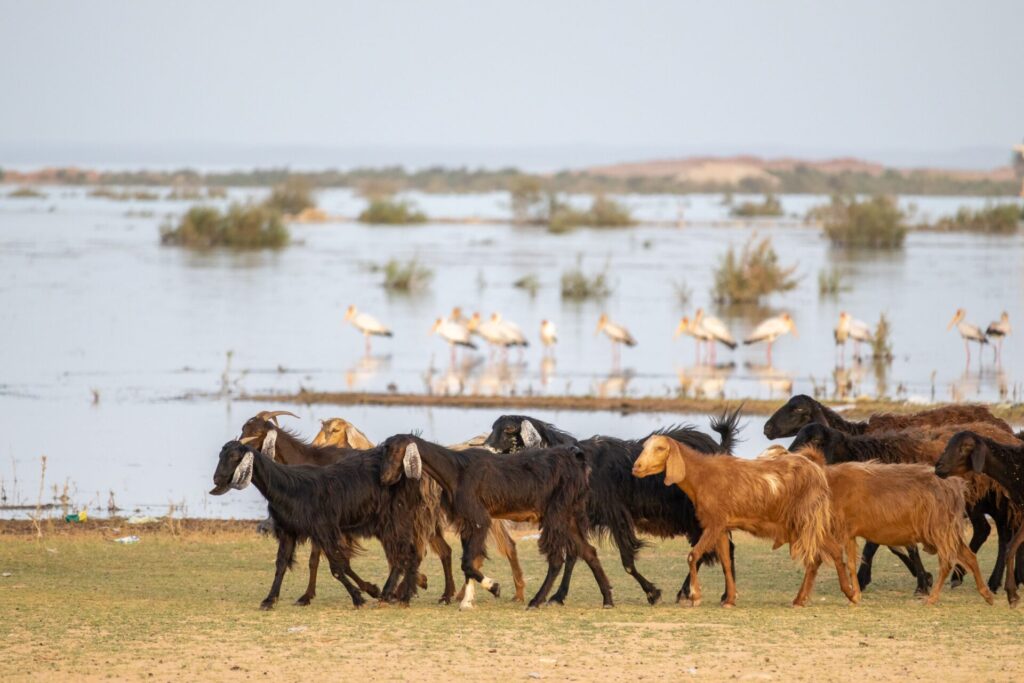
Can the model be adapted to other diseases?
A. C. We can apply a similar methodology, as we did for West Nile fever to the Rift Valley fever, and develop a similar model using different datasets. But we need to know which variables play a role in the disease spread, since each vector-borne disease has specific vectors influenced by certain factors. We will look at different environmental and climate characteristics to spot different species of mosquitoes, or other vectors, such as ticks. This is why it is so important to work in a transdisciplinary way, with epidemiologists, entomologists, as well as statisticians.
How do you plan to work with national veterinary authorities?
P. C. If all goes well, the model will be available in the summer of 2023. With WOAH’s support, we got in touch with national Veterinary Services in North African countries to organise training sessions, and to discuss how the model can be improved with their own field data, for example quantitative entomological data. The more information we feed into the model, the more accurate it will be. Once they get ahold of the model, they can use it to better focus surveillance of Rift Valley fever, and plan the best use of their resources in case of an emergency.
Imagine: November 2022, the small Brazilian town of Presidente Getúlio is the backdrop for an unprecedented event. 230 professionals representing a variety of sectors gather to respond to a simulated animal health emergency: an outbreak of African swine fever. Their goal is to test the country’s contingency plan against this deadly pig disease in real conditions, with the participation of the World Organisation for Animal Health (WOAH).
Brazil has been free from African swine fever since 1984, but as cases recently hit the Americas, the national and state-wide veterinary workforces are making sure all relevant stakeholders are well prepared in case of an outbreak. “Local, state and national Veterinary Services were involved in the exercise, as well as the police, firemen, farmers, members of the industry: all those who needed to know how to act during an animal health emergency participated. Our aim was to put into practice Brazil’s new contingency plan, to ensure it works well and make the necessary adjustments”, says Dr Sabrina Tavares, a State Coordinatior for Swine Health from Santa Catarina’s animal health services who organised and coordinated the event. Representatives from neighbouring countries such as Chile also attended the simulation exercise, alongside WOAH experts.
An ASF outbreak simulation exercise in Brazil
All photos are by CIDASC – Companhia Integrada de Desenvolvimento Agrícola de Santa Catarina
Dealing with an emergency: the value of teamwork and strong leadership
The simulation exercise took six months to organise, and unfolded throughout an entire week. An emergency operations centre was set up, with regular briefings on the situation. Teams were deployed on farms and on the roads to conduct health checks on the animals, prevent the spread of the disease, and inform the population. “We had to get everyone to understand how serious the situation could be, not only for animal health but for the whole pig production sector and country’s economy. Local authorities were of great support: we did a lot of work to publicise the simulation”, Dr Tavares says.
The teams worked together to implement the contingency plan and seek solutions to practical issues such as the disposal of infected animals. “As in a real situation, we had a limited amount of material available, and we had to figure out how best to share and distribute it”, Dr Tavares says. “Just as they would in a real crisis, the participants grew tired after a week of dealing with the emergency. Yet, real crises can last much longer. Good leadership was essential to keep everyone motivated and engaged, and to maintain a constructive mindset among the professionals who weren’t used to working together.”
Building on the lessons learnt from the simulation exercise
In the Brazilian state of Santa Catarina, Dr Tavares’s team had already organised simulation exercises for a potential outbreak of avian influenza and foot and mouth disease. But this particular exercise on African swine fever was unprecedented in scope, as it was the first exercise ever made on this disease in the country. “We learned valuable lessons”, she says. “First, that human involvement from all relevant actors is key. Second, that we needed to write a detailed manual on how to set up an operations centre in case of an emergency, and on how to organise the teams.”
Now that the exercise is over, Dr Tavares’s team is developing this manual from the exercise experience, and examples from other Brazilian states, to complement the national contingency plan. They will also draw inspiration from WOAH’s guidelines for simulation exercises. This manual will help share good practices learned from the Presidente Getúlio exercise across professions and borders, to other Brazilian states as well as neighbouring countries.
WOAH supported the event and keeps enhancing its emergency preparedness activities. It highly encourages the notification of simulation exercise activities by its Members to raise visibility, foster solidarity between countries and avoid confusion with a real event.
87% of Members have a contingency plan for at least one disease.
But only 45% of Members reported having conducted a simulation exercise.
408 simulation exercises were reported between 2002 and 2021, mostly in Europe and in the Americas.
Source: Observatory Annual Report 2022
Sharing emergency management experience across borders and sectors
ASF is not the only disease that has triggered animal health emergencies over the past years. Many other countries are also preparing for potential outbreaks of other diseases such as avian influenza or foot and mouth disease through simulation exercises.
But diseases are not the only threats with which Veterinary Services can be faced. They must also prepare for other kinds of emergencies, including agro-terrorism. In this regard, WOAH recently coordinated a cross-border simulation exercise in collaboration with the Food and Agriculture Organization of the United Nations (FAO) and the International Criminal Police Organization (INTERPOL), and with the support of the European Commission for the Control of Foot-and-Mouth Disease (EuFMD). Exercise Phoenix brought together Veterinary Services and law enforcement officers from 12 countries to explore investigation and response to an agro-terrorism event. The exercise also explored the roles of international organisations to such emergencies. The end goal: to be ready to cooperate at national, regional and at international levels and across sectors in case of an actual agro-terrorist event.
When an emergency occurs, the effectiveness of the response depends on the level of preparedness of the veterinary workforce and relevant stakeholders. That is why WOAH aims to build their resilience in the face of all types of emergencies, from disease outbreaks to agro-crime, agro-terrorism and social conflicts, including extreme climatic events. “We cannot always predict an emergency, but we can be prepared for it”, says Keith Hamilton, Head of the Preparedness and Resilience Department.
As part of its broader emergency management programme, WOAH develops international standards and guidelines for tackling health security threats, including contingency plans.
Professor Ian Brown is a virologist and scientific services director at the Animal and Plant Health Agency of the United Kingdom. He is currently chairing the OFFLU steering committee. OFFLU is an expertise network on animal influenza.
This interview was conducted in March 2023.
Why did WOAH and FAO create an expertise network on animal influenza?
Ian Brown: In the early 2000s, the international community recognised the emerging challenge of one of the animal influenza diseases: avian influenza. As specialists of the disease, we faced huge demand for our expertise and support. We felt we needed to coordinate our efforts and form a critical mass that spoke with one voice. OFFLU was created as an independent scientific network jointly by WOAH and the Food and Agriculture Organization of the United Nations (FAO).
Back then, avian influenza was affecting countries that had no experience with the disease. Other countries, in South-East Asia for instance, knew how to respond locally, but they were seeking support from the international community: did they have the right diagnostics? What sort of surveillance did they need to conduct on the animal population? Did they have the right knowledge on how to control the disease? What measures did they need to implement? What was the risk for human health?
In 2022, there was a global surge in avian influenza which is still ongoing: OFFLU is more needed than ever to share and capitalise on existing knowledge of the disease.
2022 at OFFLU: sharing valuable information with all stakeholders
In 2022, OFFLU collected and shared information on the circulating influenza viruses to guide animal and human risk assessments. This information is also critical to help scientists develop seasonal flu vaccines for humans.
What kind of support can the expertise network provide to countries that are not yet equipped to fight the disease?
I. B. The expertise network positioned itself as a central repository and go-to place for stakeholders to come to with all their questions. We also act as a resource for WOAH and FAO to develop recommendations and set best practices: we issue guidance documents and participate in taskforces and missions on the ground, to help develop national capacity to deal with the disease.
Who are the experts behind OFFLU?
I. B. We are an open network, so by definition, we do not exclude anyone. At first, we were no more than about ten research laboratories. As we developed capability in regions, more partners have joined OFFLU. They are comprised of research scientists and diagnosticians, but they also carry expertise on epidemiology, surveillance, health and safety professionals, veterinarians…
When the H1N1 influenza epidemic broke out in 2009, we created a subgroup on this disease which was still comparatively neglected. Other subgroups followed on equine influenza, wildlife, epidemiology and socio-economics.
Fostering collaboration through networks: an overview
As a scientist, what do you gain from being part of such an expertise network?
I. B. These responsibilities all come in addition to my day to day job, on a voluntary basis, but they are worth it. Through OFFLU, we are the eyes and ears, across the globe, on animal influenza. We are linked to an intelligence network on what’s happening in other parts of the world: cases of the diseases, what viruses are causing it, how they change and spread, if and where they are affecting humans… Working under the OFFLU umbrella brings specialists from all over the world, each with their different insights and approaches to problems. As a collective, we get access to major grants and internationally funded programmes.
Do you speak collectively or as individual scientists?
I. B. We do both, as long as we keep our impartiality. For example, we are currently working on an initiative to map all the variations in viruses causing avian influenza. Our report will be available to the international community to think of the best choice in vaccines for poultry. Our data is useful because it is impartially gathered. Our parent organisations, WOAH and FAO, preserve our scientific freedom of speech.
“Our data is useful because it is impartially gathered. Our parent organisations, WOAH and FAO, preserve our scientific freedom of speech”
Professor Ian Brown
What keeps your network going after twenty years?
I. B. It is important that each member sees the value of their contribution. The outputs of our collective analysis are shared with the network so that everyone wants to keep contributing. Having a great secretariat, such as the one WOAH provides, is vital to keep the information circulating.
What would be your advice to new scientific networks?
I. B. My advice would be to start small, with a very clear focus, so as not to overstretch your resources. People tend to work with colleagues they know and trust. We started as a core group of people who knew each other very well. Over time, as our outreach expanded, more people wanted to join. But we kept our common focus: we are here to provide countries with the best information and guidance to fight animal influenza.
Emerging disease events are often attributed to wildlife, yet they can also be caused by human activity, climate change, deforestation, and even some farming practices that disrupt ecosystems. When nature and ecosystems are out of balance, the health of all is impacted. Wild animals can be just as affected as humans by certain pathogens, which are particularly devastating for endangered or vulnerable species. Disease outbreaks can also have repercussions on livelihoods, as wild animals represent an important source of food and income for local communities. Bats, for instance, carry diseases, but are also vital pollinators and seed dispersers, essential to maintaining human food security worldwide as well as the health of ecosystems.
Safeguarding wildlife health keeps crucial ecosystems in balance and helps maintain the health of animals and humans alike.
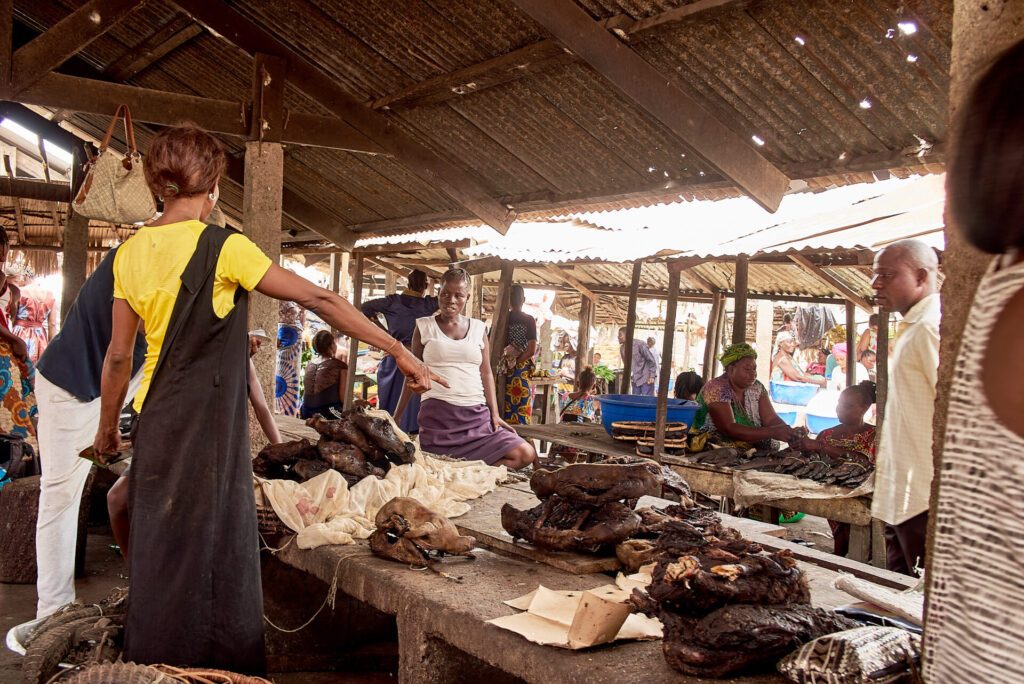
©WOAH/Elijah Muwaza
Bolstering surveillance through collaboration and early detection
In its Wildlife Health Framework, WOAH provides guidance and a clear path to address challenges at the human-animal-environment interface. Because early detection is vital to prevent pandemics, WOAH contributes to strengthening knowledge on wildlife health, and works towards reinforcing surveillance capacities at national level. Wildlife is inherently difficult to monitor, but the task can be even more arduous if, for example, the surveillance systems for domestic and wild animals are managed by distinct institutions. A highly integrated system is needed, as well as One Health collaboration of the animal, plant, and human health sectors. Therefore, WOAH has already committed itself to long-term collaboration projects with multiple actors, such as CITES, which regulates the trade of endangered species.
Wildlife health in the field: collecting and analysing samples in Cameroon
All photos are by J.-F. Lagrot
2022: the year of the avian influenza surge in wildlife
Collaboration will be crucial to stem the tide of the multiple avian influenza outbreaks which disrupted the poultry industry in 2022, with mortality rates decimating whole flocks and leading to massive preventive culling. Although most of the time, avian influenza is asymptomatic in wild birds, recent outbreaks have led to a worrying number of deaths among wildlife species.
Yet another reminder of how swiftly some diseases can jump from one species to another: 240 cases of avian influenza were reported to WOAH in sea and land mammals such as otters, dolphins and even grizzlies in 2022. The disease is killing wild animals in unprecedented numbers, including vulnerable and endangered species. The infection of mammals is relatively unusual and is a sign that the virus keeps adapting quickly, increasing the potential risk of future spillover events in mammals, including humans. At present, avian influenza spread is bolstered mainly by migratory wild birds, in addition to regulated and unregulated trade of birds, and has spread to new areas where the highly pathogenic form of the disease had not been detected for 20 years.
Throughout this crisis, WOAH has encouraged timely reporting of avian influenza cases and reminded its Members to maintain strict biosecurity and hygiene practices. These measures are communicated through a dedicated avian influenza portal on the organisation’s website, where newly issued guidelines on avian influenza and wildlife risk management are also available.
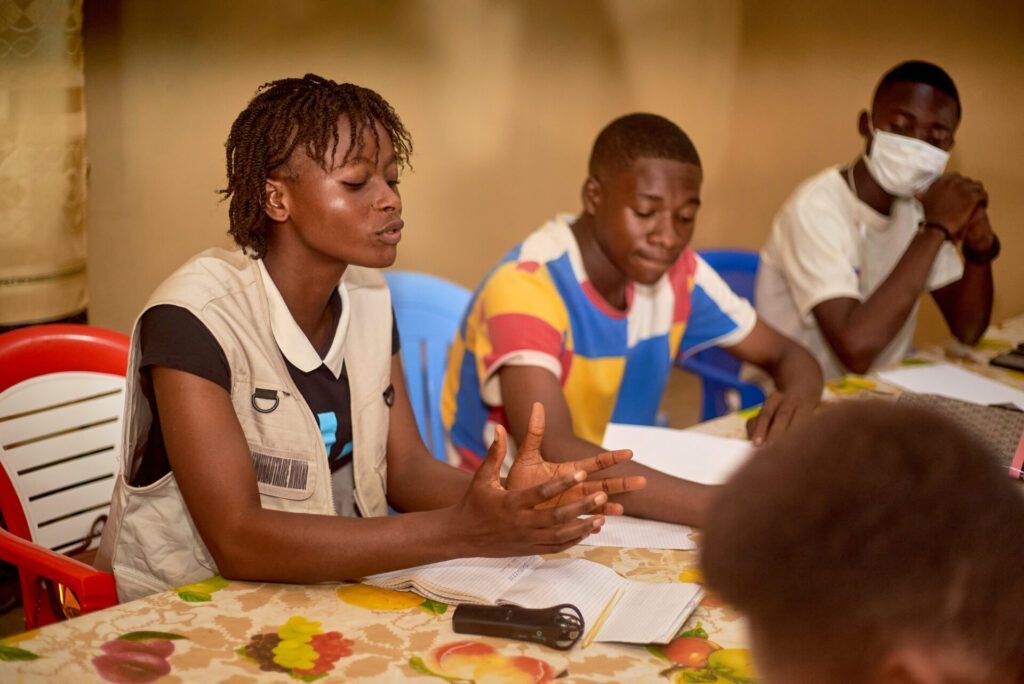
©WOAH/Elijah Muwaza
Alert: an educational game to improve wildlife health
Building preparedness from local to regional levels is key to prevent viral haemorrhagic fever outbreaks. In 2022, through the EBO-SURSY Project, WOAH launched a new education game called “Alert” to help train audiences on their role in the surveillance system.
The game provides the players with the opportunity to increase their knowledge on their specific role in the alert and response chain–who to notify, and when–, in a collaborative manner. Accurate and timely communication on wildlife health is crucial, and therefore the game was developed by WOAH to increase a community’s confidence in notifying appropriate local health and wildlife officials of possible outbreaks and spillovers in their natural surroundings. The success of a surveillance system for wildlife health hinges on the thorough involvement of all stakeholders, and especially that of the local communities: by providing early warnings of spillovers in the community to the health workforce, they play a critical role in the early detection of diseases.
The veterinary workforce and field agents from all relevant sectors are also encouraged to use the game. It should help them better understand their roles and responsibilities in their region’s surveillance system.
Due to its success, the game will be adapted to other regions in need such as Asia.
16 August 2022: Scientists of the ADAFSA Laboratory, WOAH’s Collaborating Centre for Quality Management Systems in the United Arab Emirates (UAE), met for the very first time with independent experts after initial remote conversations. The goal: to assess the capacity of their national veterinary laboratory network. This Sustainable Laboratories mission—an option proposed through WOAH’s Performance of Veterinary Services (PVS) Pathway—was transformed into a hybrid virtual and face-to-face capacity building activity to meet urgent capacity development needs in the wake of the pandemic.
“The hybrid PVS mission helped us look deep into our functions”
Paving the way for physical meetings in 2022, the initial round of capacity building consultations between laboratory members and experts initiated a data collection process as early as April. This wider time-frame, compared with traditional PVS missions, ensured maximum availability of all participants, and was a pivotal factor in the success of the mission.
“[The hybrid format] provided an opportunity to evaluate the efficiency and sustainability of our laboratory system and to get more information, knowledge and feedback from the experts”, says Dr Asma Mohammed, Director of the ADAFSA Veterinary Laboratories. “It was the best way to involve our lab team without affecting our workflow”.
The data collection tool provided by WOAH allowed participants to visualise and evaluate their own data immediately. It offered them the opportunity to “look deep into [their] functions”, making the subsequent assessment and recommendation phases more relevant.
Providing Members with actionable information and capacity building to improve animal health
With the support of WOAH’s PVS experts both online and face-to-face, UAE’s participants made significant advances in capitalising on their unique expertise in camel diseases such as Middle East respiratory syndrome (MERS), peste des petits ruminants (PPR) and brucellosis. Knowing the scientific importance of reliable diagnosis of these diseases and its commercial potential at a global scale, Dr Mohammed’s team now aims to become a certified provider of proficiency testing schemes. “The goal is to improve camel health systems by implementing WOAH international Standards, and to communicate and disseminate those standards beyond our borders”, Dr Mohammed says.
The participants also initiated a partnership with national academic institutions to launch histopathology kits for training purposes. Thanks to samples collected for over twenty years during post-mortem analyses of camels, the participants were able to fill the gap in commercially available histopathology slides for camel diseases, and supply university students with this specific training material. PVS experts spearheaded the idea to create digital kits to be deployed globally, providing a state-of-the-art training tool for universities worldwide and a financial investment for ADAFSA Laboratories. “It’s supporting animal health, it’s supporting the quality of the test, it’s improving the human and technical competency level and it’s an area of investment”, Dr Mohammed says.
The PVS Sustainable Laboratories Mission provides in-depth analysis of the pertinence, efficiency, and sustainability of the national laboratory network, including an appropriate balance of personnel, infrastructure, equipment and operational resources, based on national diagnostic needs.
Capacity building at a regional level through hybrid training
A similar hybrid approach was chosen for the 2022 capacity building training session on antimicrobial resistance (AMR) organised as part of the “Working Together to Fight Antimicrobial Resistance” Tripartite Project (WOAH, Food and Agriculture Organization of the United Nations and Pan American Health Organization), funded by the European Union. The training was delivered by the ANLIS-Malbrán Institute of Argentina, a WHO Collaborating Centre. Participants from several countries in the Americas addressed the theoretical aspects of AMR during nine virtual sessions before putting their new capacities to the test during a three-day intensive practical workshop.
Sharing of knowledge, procedures and best practices was an integral part of the training. The participants were also able to collaborate and share their experiences during the on-site part of the workshop, praising the exchanges and the connectivity it enabled beyond national borders, at a regional level.
Training the veterinary workforce beyond borders
Because the continuous and agile training of the veterinary workforce is an essential part of improving animal health globally, WOAH intends to pursue hybrid PVS missions in the future. Simultaneously, it keeps on providing quality capacity building activities to all its Members: in 2022, its online training portal continued offering free resources, activities and discussions to animal health stakeholders worldwide. Moreover, over 25 new modules are currently under development, covering areas such as emergency management, wildlife trade and surveillance, and leadership in Veterinary Services. Some of them will be part of the organisation’s online training catalogue in 2023.
In the past decades, a range of bacteria, viruses and parasites have developed a resistance to antibiotics and other antimicrobial medicines. To make sure these key treatments remain efficient, WOAH is gathering data on the amounts and reasons for antimicrobial use in animals worldwide. This information is an essential asset to reduce overuse and misuse of medication and to curb the spread of AMR.
Since 2015, Veterinary Services from all over the world have been reporting to WOAH information on antimicrobials use in animals in their country. To facilitate access to this crucial and growing set of information, the database has recently been fully digitalised. In 2022, the new online platform on antimicrobial agents intended for use in animals, ANIMUSE (for ANImal antiMicrobial USE), started to be tested by countries ahead of the public launch, foreseen in 2023. It features easier reporting, error checks, and data visualisation tools to facilitate analysis and communication. Ultimately, it aims to improve practices of the veterinary workforce with regard to antimicrobial use.
Providing user-friendly analysis of antimicrobial use
Dr Carolee Carlson, a veterinarian and epidemiologist for the Public Health Agency of Canada, has participated in the development of the new platform. She was among the first experts to test it and appreciate its benefits. “ANIMUSE will facilitate our work in many ways. It collects enough information to be useful, but not too much to be overwhelming. I can retrieve all the data I uploaded in the past years, compare them, see where Canada ranks and our trends over time. The error detection tool is very precious, particularly for such complex data as these, coming from a variety of sources.”
“The platform is very helpful, because it allows a much faster import and use of the data”, says Dr Slobodanka Božić, WOAH’s focal point on veterinary products for Bosnia and Herzegovina. A former veterinarian in the field, she is now in charge of collecting data on antimicrobials use for the country’s national veterinary office. Dr Božić started uploading data on ANIMUSE in 2022. “The platform is handy to create user-friendly presentations for ministries and other key stakeholders. Our country doesn’t have a national action plan on antimicrobial resistance yet, so better data communication is a key tool to raise awareness on this issue.”
Gradual options to foster participation
Ninety-two countries had already reported data on WOAH’s global database on antimicrobial resistance, as of February 2023. The reporting is open to all countries, either WOAH Members or non-members. They can submit general information. And if quantitative information is available, they can choose among three reporting options, according to the degree of detail of their data. “A key strength of ANIMUSE is its flexibility, says Dr Carlson. Countries at any level of their surveillance programme can report on the platform. Even if a country’s insight on amounts of antimicrobials used in animals is limited, being able to join the platform fosters discussion and improvement over time.”
Dr Božić started reporting for Bosnia and Herzegovina in 2018 at option 1. “At the time, I could only report on the general quantity of antimicrobials in use. We started with our imports data, since all antimicrobials are imported in our country. In 2022, I was able to request information from wholesalers and upgrade our reporting to option 3, with much more detail on reasons for use, type of animals and mode of administration of the drugs. It gives us a finer picture of antimicrobial use in our country.”

A finer picture of antimicrobial use to improve policies
Farm-level data is also available in Canada , including information on doses of medication, duration and reasons for use. “From a stewardship perspective, these data are full of possibilities. For example, if you know a product is used to fight a specific disease, policymakers can rely on this information to consider the development of a vaccine as an alternative to the use of antimicrobial agents. Detailed information is our best asset in the fight against antimicrobial use.”
The ANIMUSE platform will be open to public navigation in 2023.
Joining forces to fight AMR
In November 2022, ministers of Health, Agriculture, and policymakers from all over the world gathered in Muscat, Oman, for the Third Global High-Level Ministerial Conference on Antimicrobial Resistance. Two of the agreed key targets concern exclusively the agri-food sector:
- Reduce the total amount of antimicrobials used in animals and agriculture by at least 30-50% by 2030, galvanising national and global efforts.
- Preserve critically important antimicrobials for human medicine, ending the use of medically important antimicrobials for non-veterinary medical use, including growth promotion in animals.
ANIMUSE plays a key role in our support to Members to reach these targets, by helping the veterinary workforce understand and monitor antimicrobial use in a harmonised and comparable way, across time and, eventually, across sectors as well.

